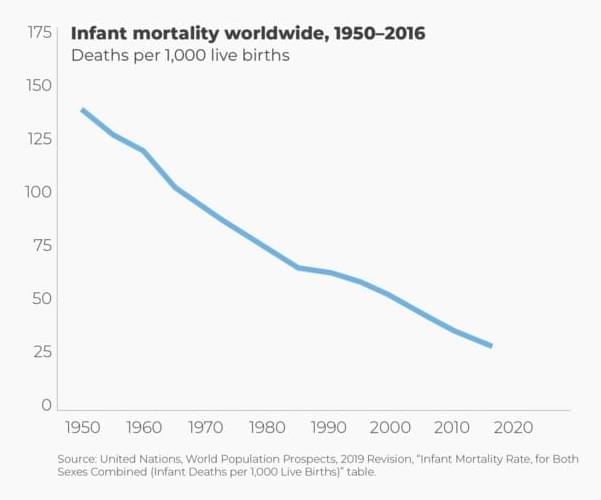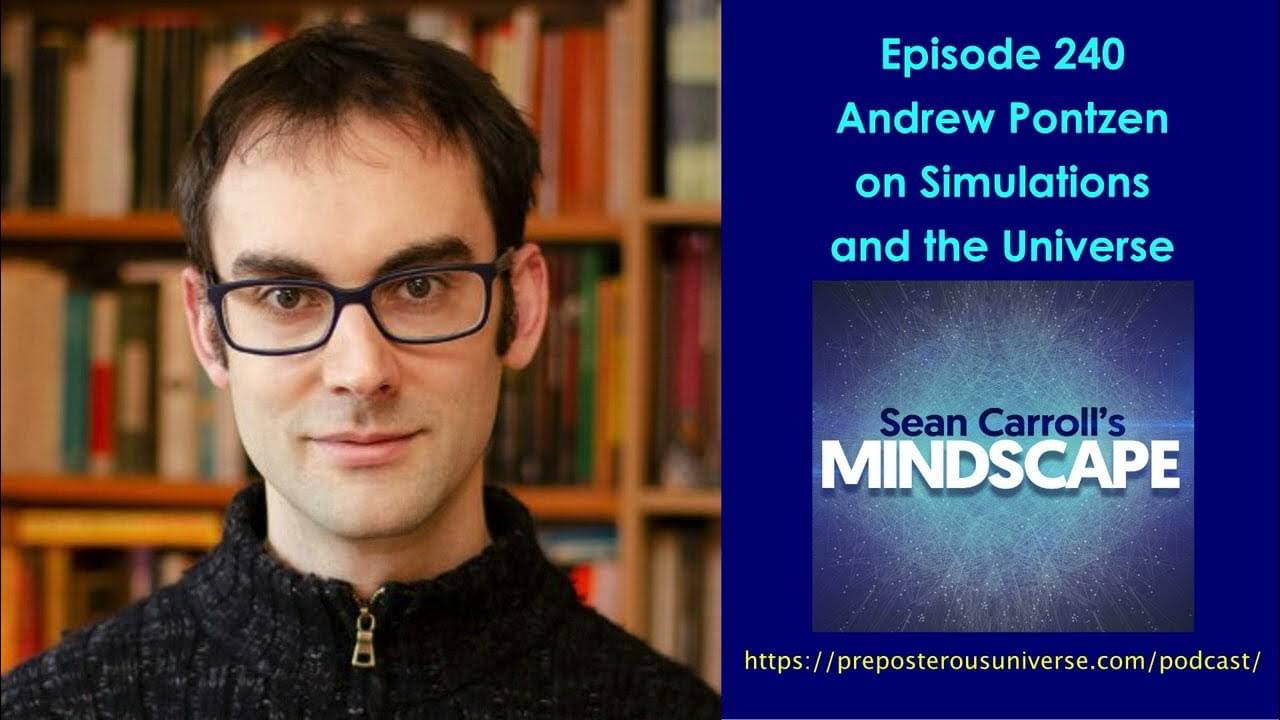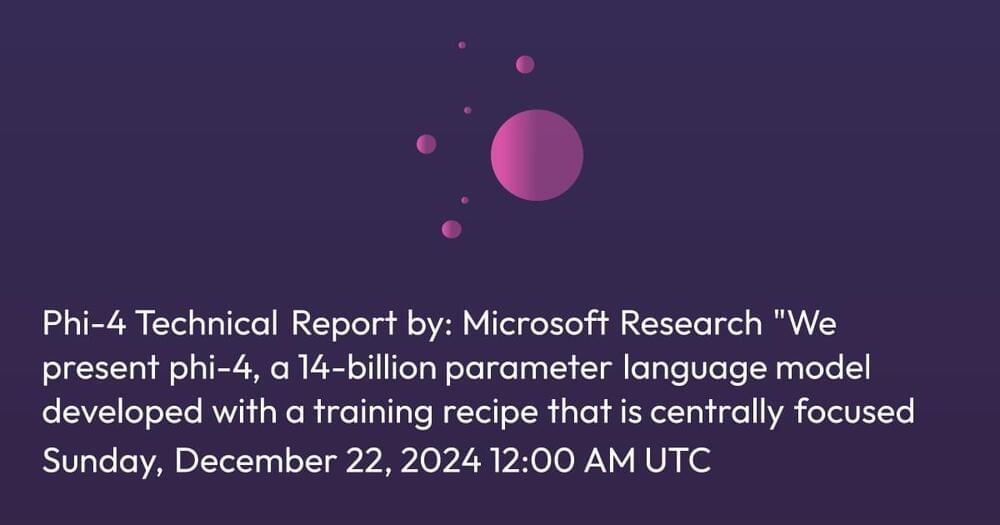OpenAI is slowly inviting selected users to test a whole new set of reasoning models named o3 and o3 mini, successors to the o1 and o1-mini models that just entered full release earlier this month.
Demographers estimate that in premodern societies, out of every 1,000 babies born, about 300 died before reaching their first birthday. Most of those infants succumbed to infectious diseases and malnutrition.
By 1900, infant mortality rates had fallen to approximately 140 per 1,000 live births in modernizing countries, such as the United Kingdom and the United States. Infant mortality rates in the two countries continued to fall to about 56 per 1,000 live births in 1935 and down to about 30 per 1,000 live births by 1950. In 2017, the UK and U.S. infant mortality rates were, respectively, 3.8 and 5.9 per 1,000 live births. Since 1900, in other words, infant mortality in those two countries has fallen by more than 95 percent.
In the past few decades, infant mortality rates have been falling steeply in the rest of the world. The World Health Organization estimates that the global infant mortality rate was just under 160 per 1,000 live births in 1950. By 1990, the agency reports that the global infant mortality rate had dropped to 64.8 per 1,000 live births. In 2017, the global infant mortality rate was down to 29.4 per 1,000 live births, about the level of the United Kingdom and the United States in 1950.
Patreon: https://www.patreon.com/seanmcarroll.
Blog post with audio player, show notes, and transcript: https://www.preposterousuniverse.com/podcast/2023/06/19/240-…-universe/
It’s somewhat amazing that cosmology, the study of the universe as a whole, can make any progress at all. But it has, especially so in recent decades. Partly that’s because nature has been kind to us in some ways: the universe is quite a simple place on large scales and at early times. Another reason is a leap forward in the data we have collected, and in the growing use of a powerful tool: computer simulations. I talk with cosmologist Andrew Pontzen on what we know about the universe, and how simulations have helped us figure it out. We also touch on hot topics in cosmology (early galaxies discovered by JWST) as well as philosophical issues (are simulations data or theory?).
Andrew Pontzen received his Ph.D. in astronomy from the University of Cambridge. He is currently Professor of Cosmology at University College London. In addition to his research in cosmology, he frequently writes popular articles and appears in science documentaries. His new book is The Universe in a Box: Simulations and the Quest to Code the Cosmos.
Mindscape Podcast playlist: https://www.youtube.com/playlist?list=PLrxfgDEc2NxY_fRExpDXr87tzRbPCaA5x.
OpenAI’s Sam Altman says AGI is becoming a “less useful term” with o1 — “astonishing cognitive capabilities” predicted before 2026
Posted in robotics/AI | Leave a Comment on OpenAI’s Sam Altman says AGI is becoming a “less useful term” with o1 — “astonishing cognitive capabilities” predicted before 2026
OpenAI CEO says AGI is losing its meaning as the company edges closer to achieving the benchmark.
Phi-4 Technical Report by: Microsoft Research “We present phi-4, a 14-billion parameter language model developed with a training recipe that is centrally focused on data quality.”
Speakers: Cecile Tamura, Robert Pray, Riju Pahwa
One hacker has managed to recover over $2,000,000 for a man who forgot the password to his crypto wallet by breaking into the physical device in a ‘high-stakes’ hacking attempt.
Even in its infancy cryptocurrency was worth a lot of money, and it’s surprisingly easy to lose it all with one simple mistake.
Horror stories of people accidentally throwing away hard drives with hundreds of millions of dollars worth of Bitcoin are more than enough to scare anyone away, and this particular video shows how close of a call it can be to recover otherwise simple information.
There are various studies that have explored the role of the body’s circadian rhythm in regulating immune activity. Disruptions in the circadian rhythms exacerbate inflammation. Researchers from the Royal College of Surgeons in Ireland (RCSI) University of Medicine and Health Sciences have previously studied how the immune cells called macrophages are affected without an internal body clock. Now, new research by RCSI describes how macrophages work differently at various times of day and could pave the way for time-targeted treatments for inflammatory diseases. The research also illuminates a key role for mitochondria in driving daily changes in immune activity.
The findings are published in The FASEB Journal in an article titled, “Time-of-day control of mitochondria regulates NLRP3 inflammasome activation in macrophages.”
Macrophages release interleukin-1 (IL-1) cytokines in response to inflammatory stimuli, and the NLRP3 inflammasome mediates IL-1-family cytokine release via pyroptosis. Mitochondria play a multifaceted role regulating NLRP3 inflammasome activity. However, whether the macrophage clock regulates the NLRP3 inflammasome via mitochondrial control remains unclear.
Lithocholic acid is one of the metabolites upregulated during calorie restriction, and treatment of mice, worms and flies with this bile acid alone can reproduce the health benefits of calorie restriction.
Brown dwarfs are curious celestial bodies that appear to straddle the mass divide between stars and planets. Often referred to as “failed stars,” brown dwarfs form in isolation from a collapsing cloud of gas and dust like a star.
However, while fully-fledged stars continue to gather material from the gas and dust cloud that births them, brown dwarfs are less successful at this mass harvesting. As a result, they don’t reach the masses of the smallest stars and can’t trigger the process that defines main sequence stars, like our sun.
Dwarf galaxies like the SMC are often un-evolved when it comes to their chemistry because their history of star formation isn’t very extensive, so they haven’t had a chance to build up many heavy elements, such as carbon, nitrogen, oxygen, silicon or iron. NGC 346, for instance, contains about 10% the abundance of heavy elements that star-forming regions in our Milky Way galaxy have. This makes clusters such as NGC 346 great proxies for studying conditions akin to those found in the early universe.
NGC 346 is still forming lots of stars, and JWST found that many of the young ones, with ages of 20 to 30 million years, still possess planet-forming disks around them. Their existence confounds expectations.
“With Webb, we have a strong confirmation of what we saw with Hubble, and we must rethink how we create computer models for planet formation and early evolution in the young universe,” said Guido De Marchi of the European Space Research and Technology Centre (ESTEC) in the Netherlands, who led the research.









